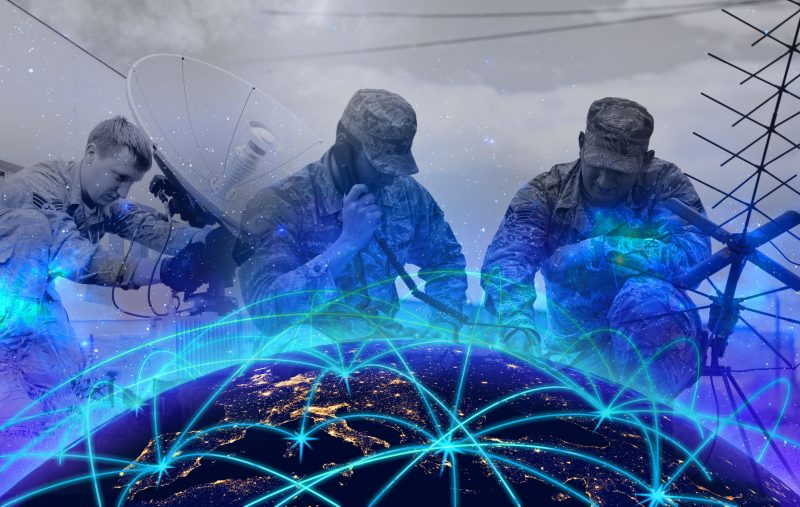Latest News

Via Satellite illustration
A decade ago, commercial IT underwent a widespread shift under the theme of convergence — of hardware and software, networks, cloud, and more. Today those efforts underpin modern government IT operations, but the concept of convergence is re-emerging as digital transformation demands closer alignment of technologies, applications, and collaboration to achieve advanced functionality.
This is particularly clear in the space sector, where small sats, commercial launch, software-defined satellites and leaps in communications are just some of the disruptive movements driving convergence of space-based development and capabilities.
The result is an amalgamation of demands, capabilities and scenarios ripe for realizing a futuristic vision of military space operations. This is the crux and the defining concept of convergence and its evolution: Think integrated constellations of different types of satellites made by different manufacturers; low-latency, near real-time communications between satellites and in terrestrial operations; an evolution in ground systems capabilities and offerings; unprecedented visibility and situational awareness; and a growing demand for open, modular standards and systems that augment space operations.
In an increasingly competitive and congested environment — one where the U.S. military is aggressively positioning for the decisive edge — today’s “New Space” is defined by disruptive convergence across a range of technologies, applications, and stakeholders. This concept will only gain more momentum with waveform virtualization, 5G implementation, Artificial Intelligence (AI), and the consolidation of once-proprietary layers of vendors, systems, networks, devices, and services.
Advances in satellite communications afford the U.S. a range of capabilities that, especially when combined, create unprecedented flexibility and decisive advantage. As these new technologies and applications gain broader adoption, convergence will become more of a defining aspect of space operations — and even more of a platform for national security that empowers our armed forces.
At MilSatCom Digital Week in December, U.S. Space Force Col. Ryan Colburn, director of the Spectrum Warfare Division of the Space and Missile Systems Center, said that when capabilities are converged, “that’s when I’m disruptive.”
Colburn specifically called out as prime examples optical crosslinks that enable laser-based communications between satellites, software-defined satellites capable of on-orbit reprogramming, and the combination of smaller, more powerful antennae and distributed ground sources. Merging and continuing to optimize these capabilities will be the game changer, he added.
Perhaps the most significant promise of emerging technology and converged capabilities is resilience that enables undisrupted communications and continuity of mission operations. Resilience is a top concern for military leaders facing vulnerabilities in aging government space systems, peer-level adversarial developments in space, including those targeting the satellites that power GPS, and intense focus on joint operations across all of the warfare domains.
In a recently released strategic vision, Gen. James Dickinson, commander of U.S. Space Command, wrote about how space has become a war-fighting domain: “Our competitors are not only challenging national security and prosperity in cyberspace, on land, at sea, and in the air; they have turned space, a once peaceful environment, into a war-fighting domain. Technological advances, changes in strategic guidance, and new security challenges require United States Space Command to innovate and adapt to ensure that space warfighters are prepared to accomplish future missions in, from, and to space.”
With a new White House administration in place and a new defense secretary at the helm of the Pentagon, the commercial satcom industry will be watching closely for expected investment in commercial technologies and privately driven innovation, special operations-focused capabilities and tools that are adaptable according to specific mission requirements. This will likely include more “as-a-service” offerings, including satcom-as-a-service and commercial imagery used for intelligence, surveillance and reconnaissance, among other applications.
In the move away from legacy infrastructures and toward new approaches — and as troops are deployed in increasingly dispersed geographic locations — it will be critical for the services to continuously maintain the command and control built on U.S. Defense Department information networks and systems. Connectivity that meets a compounding demand and supports communications anywhere on the planet will be central to this reliability.
One way the military can seamlessly transition to next-generation capabilities is through network transport virtualization — specifically through the virtualization of waveforms or modems as well as other network applications that are situated at the tactical edge. Virtualization, particularly when used in concert with cutting-edge antennae and ground systems, will help mitigate enemy interference through alternative data pathways enabled by multiple waveform applications operating concurrently on the same hardware. Furthermore, virtualization underscores the importance of convergence in the broadest sense.
Eventually, common, commercial-off-the-shelf hardware paired with virtualization will power satcom capabilities that span networks, bands, waveforms and constellations. These emerging capabilities will spur an ecosystem of advanced technologies and communications that exceed the limitations of legacy systems and dwarf the growing competencies of adversaries. In this sense, it is clear what convergence signals: a transformation at its dawn in 2021, with the U.S. at the helm.
 Michael Geist is the senior vice president of strategy and technology at Envistacom, where he works to provide the federal government and other customers with secure, resilient, cutting-edge satellite communications capabilities.
Michael Geist is the senior vice president of strategy and technology at Envistacom, where he works to provide the federal government and other customers with secure, resilient, cutting-edge satellite communications capabilities.
Get the latest Via Satellite news!
Subscribe Now